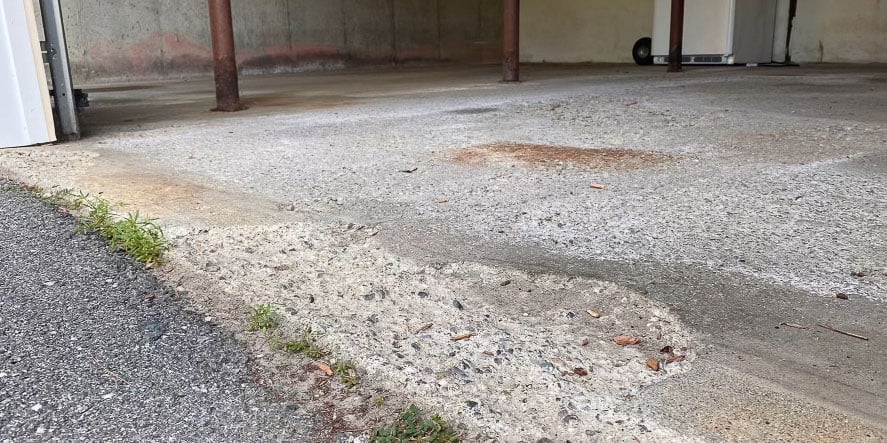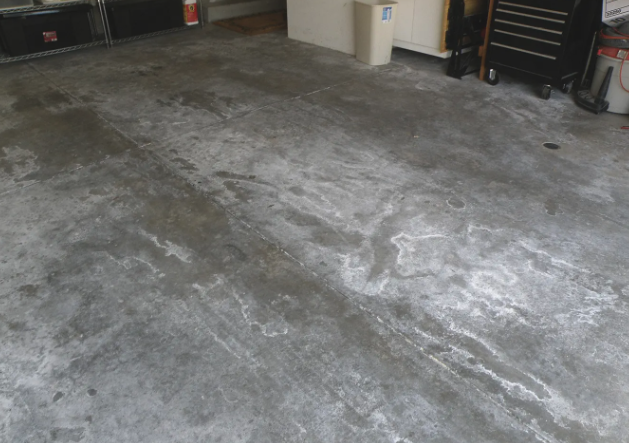
What is Efflorescence?
Efflorescence is the migration of a salts to the surface of a concrete slab. You may see this occur on both indoor and exterior concrete surfaces. For Efflorescence to occur, salt must be present within the substrate. Water mixes with the salt to create a soluble solution that migrates to the surface. As the water evaporates, the salt crystalizes and leaves a residue. Efflorescence appears in slabs with elevated moisture vapor emission levels.
What Problems does Efflorescence Cause?
Often efflorescence causes nothing more than aesthetic issues. In some cases, it can also be representative of structural integrity problems within the concrete itself. Degradation can be caused by the salts clogging the pores of the concrete which can lead to destruction by internal water pressure. Concrete spalling or shearing are common examples of damage from Efflorescence.

What Causes Efflorescence?
Cement, Lime and Admixtures can contain a range of soluble salts that can be manifested in Efflorescence. Concrete slabs with high soluble salt contents and elevated moisture vapor emissions will lead to efflorescence. Water from condensation, groundwater wicking and other outside factors will amplify any potential issues. Efflorescence is often a seasonal problem, and humidity will impact whether soluble salts appear. While it can occur at any time, efflorescence usually escalates in winter, since rain, snow, sleet and other inclement weather conditions may arise.
For older slabs that do not have a vapor barrier membrane or slabs subject to high moisture content, moisture and resulting efflorescence can be a constant challenge.
How to Mitigate Efflorescence
Efflorescence itself is an indication of an elevated moisture vapor emission rates in the concrete slab. For older slabs and slabs with high levels of moisture, the issue will continue into perpetuity and will not be treatable. Furthermore, if hydrostatic (physical water pressure) moisture is present then the issue is likely not remediable without removal and replacement of the slab.
100% solids Vapor Barrier Epoxies may help to hold back efflorescence as they are engineered for high tolerance to chemical attack. Their performance will be predicated on how well they resist degradation from the highly caustic solution stemming from the water and soluble salt solution. Polyurethane Concrete systems offer another option and are generally perform very well in slabs with higher levels of soluble salts. In general, efflorescence will continue to manifest below a coating. While a Vapor Barrier Epoxy or Polyurethane Concrete Coating may help hold back efflorescence there are no long-term guarantees.
Questions? Please contact us at:
Resinwerks
Main: 720-484-5160
Email: info@resinwerks.com

